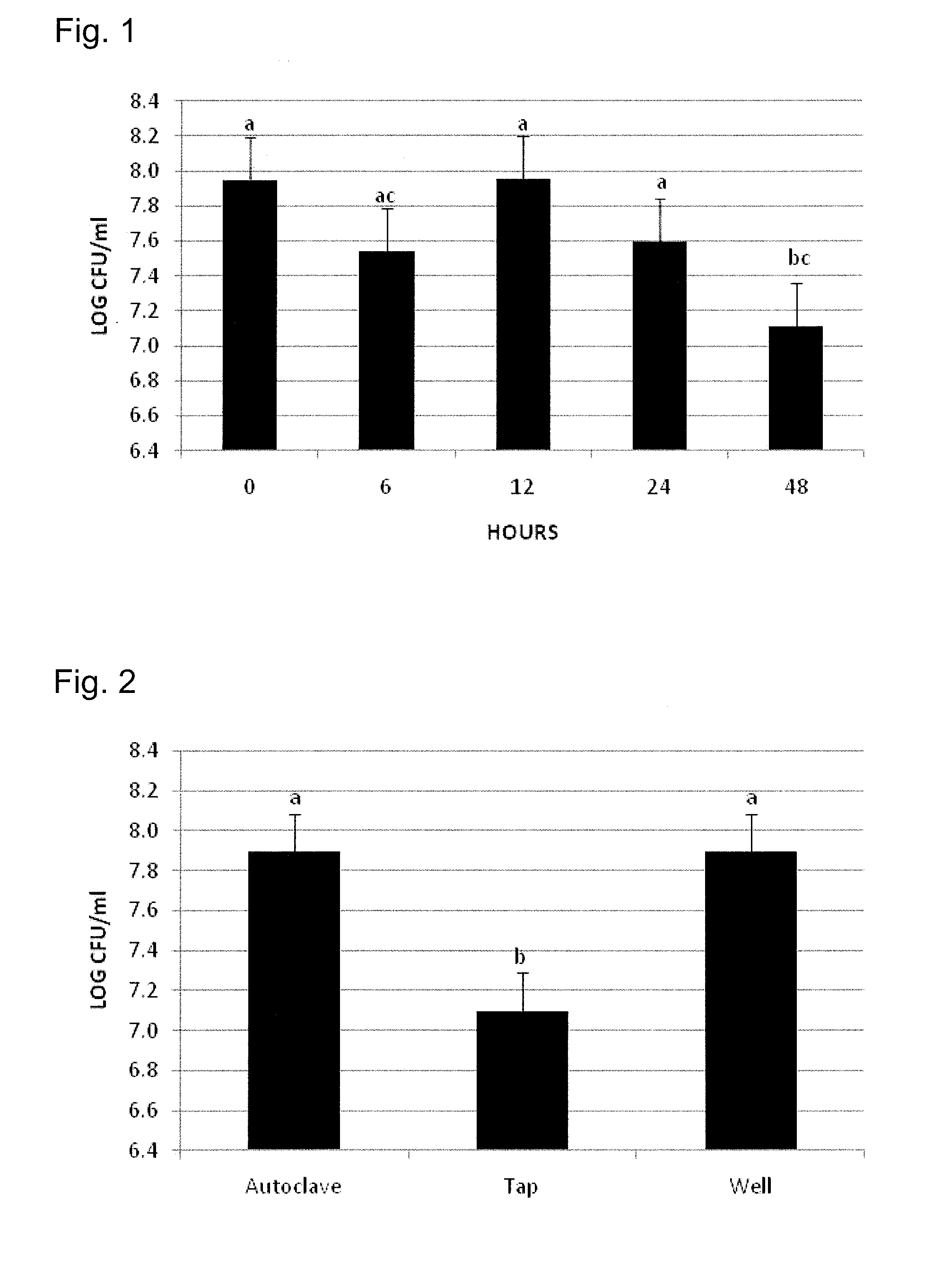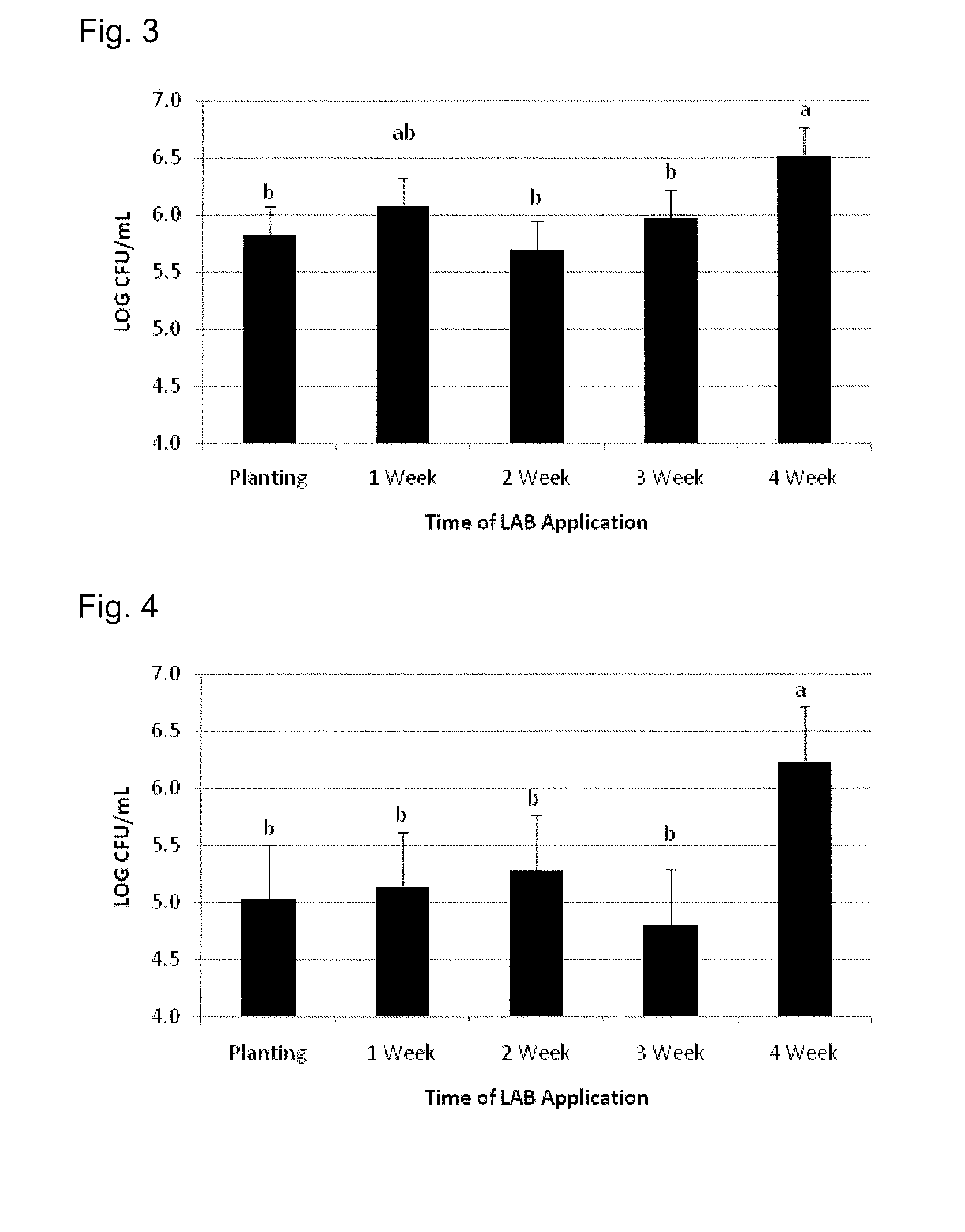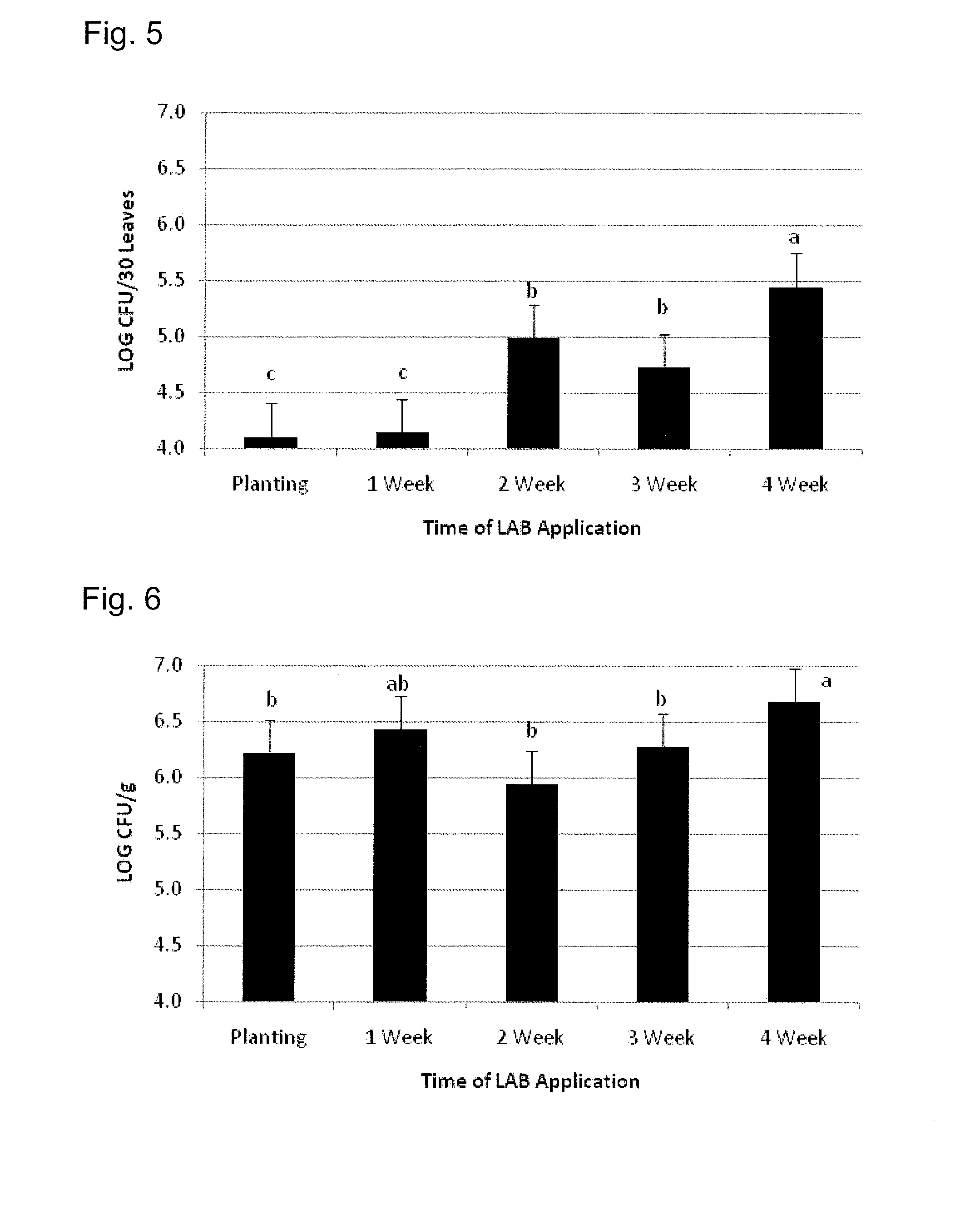Inhibition Of Pathogenic Growth On Plant Materials Using Lactic Acid Producing Microorganisms
a technology of lactic acid and pathogenic growth, applied in the direction of biocide, disinfectant, animal repellent, etc., can solve the problems of food-contaminating pathogens posing health risks ranging from mild to life-threatening to humans, serious infections, and difficult problems to solve, so as to reduce the number of pathogens
- Summary
- Abstract
- Description
- Claims
- Application Information
AI Technical Summary
Benefits of technology
Problems solved by technology
Method used
Image
Examples
example 1
Inhibitory Activities of Various Microorganism on Pathogen Growth
[0116]Lyophilized cultures of lactic acid producing and lactate utilizing organisms are selected for their ability to inhibit the growth of pathogens such as E. coli O157:H7, Streptococcus aureus and Salmonella. Combinations of the lactic acid producing and lactate utilizing organisms are further selected for their ability to maximize the inhibition of growth of the various pathogens.
[0117]In vitro tests are conducted to identify particularly effective single strains. Seven strains of Propionibacterium and six strains of Lactobacillus are screened for their ability to produce bacteriocins capable of creating zones of inhibition on agar plates that are grown with E. coli O157:H7 (See Table 1 and Table 2).
TABLE 1Inhibitory Activity of PropionibacteriumStrains Grown in Selective MediaPATHOGENP9P42P79P88P93P99PF24Gram+B. cereusNoNoNoNoNoNoNoS. aureusYesYesYesNoNoNoNoGram−E. coli O157:H7YesYesNoNoYesYesYesSal. typhiriumNoYe...
example 2
Comparison of the Growth of Selected Microorganisms and the Pathogen E. coli 0157:117
[0118]Selected strains of Lactobacillus acidophilus and Propionibacterium freudenreichii bacteria were grown in an in vitro comparison with E. coli O157:H7 on rich semi-anaerobic media at 38° C. to assess competition with E. coli growth under in vivo growth conditions. LA51 and LA45 strains out-grow E. coli (See Table 3).
TABLE 3Growth (Optical Density) of Selected Strains of Bacteria versusE. coli O157:H7 on Rich Semi-Anaerobic Media at 38° C.MINUTESE. coli O157:H7LA45LA51PF2400.20.20.20.2500.30.380.550.3900.450.650.840.351200.600.851.00.362000.801.21.280.382300.851.251.280.393650.901.251.280.504400.901.251.280.58
example 3
Post-Harvest Treatment of Spinach by LAB Helps Reduce Pathogen Content
[0119]Spinach samples were inoculated with E. coli O157:H7. Spinach samples were then rinsed with sterile distilled water and a four-strain lactic acid producing microorganism (LAB) cocktail at a target concentration of 2.0×108 CFU / mL. Both treatments were then compared to an inoculated control throughout the 24-hour sampling period at 7° C. Reductions achieved by water and LAB were significant at 0.88 logs (p<0.0001) and 1.03 logs (p<0.0001) respectively, in comparison to the control sample. The improved reduction by LAB over water was significant (p=0.0363), indicating that LAB is the most effective treatment in the present study.
[0120]A cocktail of four E. coli O157:H7 strains was used for this study and includes A4 966, A5 528, A1 920 and 966. All strains had been isolated from cattle and originally obtained from the University of Nebraska. The cocktail is prepared by making frozen concentrated cultures of eac...
PUM
 Login to View More
Login to View More Abstract
Description
Claims
Application Information
 Login to View More
Login to View More - R&D
- Intellectual Property
- Life Sciences
- Materials
- Tech Scout
- Unparalleled Data Quality
- Higher Quality Content
- 60% Fewer Hallucinations
Browse by: Latest US Patents, China's latest patents, Technical Efficacy Thesaurus, Application Domain, Technology Topic, Popular Technical Reports.
© 2025 PatSnap. All rights reserved.Legal|Privacy policy|Modern Slavery Act Transparency Statement|Sitemap|About US| Contact US: help@patsnap.com



